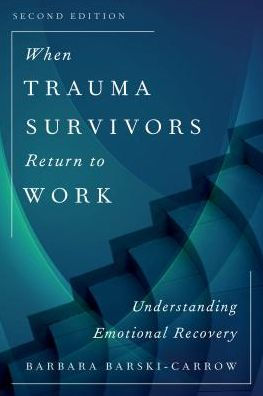When Trauma Survivors Return to Work: Understanding Emotional Recovery
When a coworker comes back to work after experiencing trauma, her colleagues may not know what to do or say or how to act. This book helps them ease the transition for the affected person. A helpful guide for managers, coworkers, and others, When Trauma Survivors Return to Work offers timely advice, careful insights, and tips and tools throughout.
"1100305187"
When Trauma Survivors Return to Work: Understanding Emotional Recovery
When a coworker comes back to work after experiencing trauma, her colleagues may not know what to do or say or how to act. This book helps them ease the transition for the affected person. A helpful guide for managers, coworkers, and others, When Trauma Survivors Return to Work offers timely advice, careful insights, and tips and tools throughout.
31.0
In Stock
5
1

When Trauma Survivors Return to Work: Understanding Emotional Recovery
206
When Trauma Survivors Return to Work: Understanding Emotional Recovery
206Paperback(Second Edition)
$31.00
31.0
In Stock

Product Details
| ISBN-13: | 9781538105771 |
|---|---|
| Publisher: | Rowman & Littlefield Publishers, Inc. |
| Publication date: | 02/19/2018 |
| Edition description: | Second Edition |
| Pages: | 206 |
| Product dimensions: | 5.90(w) x 8.90(h) x 0.80(d) |
About the Author
From the B&N Reads Blog
